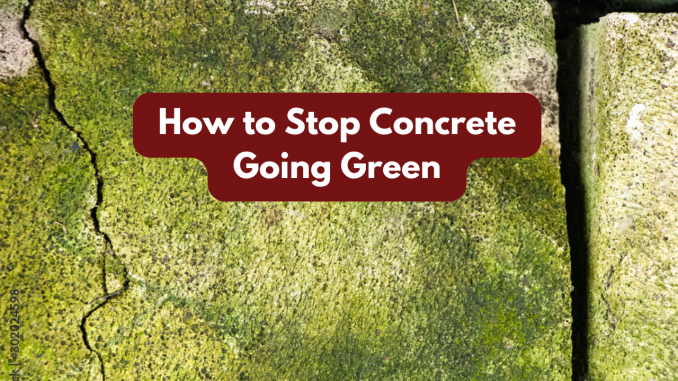
Concrete is widely used in construction due to its durability, strength, and versatility. However, over time, concrete surfaces, especially in outdoor environments, may develop an unattractive greenish hue. This discolouration is often caused by algae, moss, or mildew growth, especially in damp or shaded areas. Fortunately, there are ways to prevent and treat this issue effectively.
Here are several strategies, recommended by concrete suppliers, for keeping concrete surfaces clean and free from green growth:
Ensure Proper Drainage
One of the key reasons for green discolouration on concrete is moisture retention. If water is allowed to pool on the surface, it creates a damp environment that promotes algae, moss, or mildew growth. Ensuring proper drainage in areas around concrete surfaces can help mitigate this issue.
- Install drainage systems like gutters and downspouts to direct water away from concrete.
- Ensure sloping surfaces so that rainwater flows off, preventing puddling.
Regular Cleaning and Maintenance
Routine cleaning can prevent the buildup of dirt, organic matter, and moisture, which contribute to algae and mildew growth.
- Sweep surfaces regularly to remove leaves, dirt, and other debris that can trap moisture.
- Use a pressure washer periodically to clean off dirt, algae, and mold before they become severe.
- For a more thorough cleaning, apply a mixture of water and mild detergent or vinegar and scrub the surface with a stiff brush.
Use Algaecides or Moss Killers
To proactively prevent the growth of algae, moss, and mildew, consider using a biocide or an algaecide treatment. These are specially formulated products designed to kill and prevent green growth.
- Apply an algaecide after cleaning the surface for long-lasting protection. Some products can prevent regrowth for up to a year.
- Use a sprayer or roller to apply the treatment evenly across the surface.
Enhance Sunlight Exposure
Algae and moss thrive in dark, damp environments. Concrete surfaces that remain shaded or receive little direct sunlight are more likely to develop green discolouration.
- Trim back trees or shrubs that cast shadows over concrete areas. This will allow more sunlight to reach the surface, helping to dry it out and inhibit growth.
- Consider relocating outdoor furniture or structures that may block sunlight.
Seal the Concrete Surface
Applying a water-repellent sealer to concrete is an excellent preventative measure. Concrete sealers create a protective barrier that prevents moisture from seeping into the porous surface, thus reducing the chances of algae and moss formation.
- Choose a high-quality, breathable sealer designed for outdoor concrete. Breathability ensures that moisture can escape while still providing water resistance.
- Reapply the sealer every few years to maintain its effectiveness.
Use Preventive Coatings
In addition to sealers, there are specific coatings designed to inhibit algae and mildew growth after you have had your concrete pumped and set. These are particularly useful for concrete surfaces in consistently damp or shaded areas.
- Look for coatings that contain anti-fungal and anti-algae agents. These coatings are usually clear and can be applied similarly to regular sealers.
- Some coatings are designed to be more permanent, requiring less frequent reapplication than standard sealers.
Control Humidity and Airflow
Improving ventilation and reducing humidity in enclosed or semi-enclosed areas can also prevent moisture accumulation that leads to green growth. For example, covered patios or garages may benefit from better airflow.
- Install fans or increase airflow in humid spaces.
- Ensure proper ventilation in basement areas with concrete flooring.
Avoid Over-Watering Plants Near Concrete
If your concrete is near garden beds, lawns, or planters, over-watering can contribute to moisture seeping into the concrete, creating an environment conducive to algae and moss growth.
- Water plants efficiently and avoid excessive spraying of water onto concrete surfaces.
- Consider using drip irrigation systems to minimize water splashing onto concrete.
Preventing concrete from turning green involves a combination of regular maintenance, moisture control, and protective treatments. By addressing the underlying causes of moisture build-up, keeping surfaces clean, and applying preventive measures, you can keep your concrete looking clean and free from unsightly green discolouration. With these practical strategies, homeowners and property managers can enjoy attractive and well-maintained concrete surfaces for years to come.

Leave a Reply